初學者低音吉他(貝斯)演奏 – 建立技巧的結構和策略(第 1 部分)
右手
首先,沒有所謂的“正確”技術。 每個人都只是尋找適合他們的技術。
如果你不與其他人比較,你是不會察覺自己的技術有任何問題。
低音吉他手被認為是樂隊中最勤奮的角色之一。
低音吉他手的節奏需要與鼓手同步,要依靠節拍並準確地發出音符,你要能夠用右手以最小的力量和一致性撥動琴弦, 這種能力可以從右手的適當練習中發展起來。
首先,包括訓練食指和中指彈撥是主要的目標。 低音吉他基本上是指彈風格。 如果你以前不熟悉該低音吉他,只需拿起它並按照以下簡單的指南嘗試一下。
1. 用緩慢的節拍器撥弦。 大約 60bpm – 70bpm。 這不是我自己的想法,但是每個頂級音樂家的最佳建議,試圖告訴你慢速節拍器會更容易接近任何樂器。
2. 切換食指和中指撥弦,使兩指之間的音量和力度相同,你應該能夠獲得相同或相當接近的聲音。當然,低音吉他的聲音需要強大的動力和紮實的節奏感才能配合鼓的節奏,你不希望低音吉他的聲音,聽起來就像是兩個不同的人在演奏,因為你的食指和中指彈奏不一致,這對音樂和你的樂隊夥伴來說會變成一個非常煩人的情況。
3. 用細分節奏撥弦。 從慢速開始,意味著你可以更準確地聽到並感覺到細分的節拍。 全音符、二分音符、四分音符、八分音符、三連音、十六分音符的感覺,從這個階段的音樂基礎上,應該是能夠勝任的,清楚的了解。 對這些音符有正確的感覺不僅可以幫助你計算小節、緊隨歌曲的進程,還可以為你創建良好的節奏感。 能夠識別拍號並立即擊中節拍是低音吉他手的優點,如果你有良好的節奏感,你將永遠不會錯過任何一個節拍。
左手
了解低音吉他的正確左手位置將使按弦和指法更簡單,因為左手會更舒適。通過保持鬆散和放鬆,你將能夠以最少的努力按弦。正確的位置還可以讓你以極快的速度和極高的準確性演奏。
你希望你的左手每根手指覆蓋一個frets,而不會對你的手造成任何過度的壓力。這種間距將使您的手可以在不移動的情況下執行幾乎任何音樂。當你必須移動時,向任一方向移動一個fret通常就足夠了。
1. 練習前將左臂伸到身前。保持手腕和手伸直。不要在沒有全面頭腦的情況下努力練習樂器,練習的能量是有限的,你只是不想浪費它們以獲得任何富有成效的結果。保持手腕筆直的手勢是必要的,以避免左手不准確的微動技術。
當你試圖將手指放在指板上並迅速消耗左手耐力時,彎曲手腕只會使您更加困難,即使你不是有意使用肌肉。首先,你的左手應該放鬆,不需要肌肉僵硬。
2. 保持手腕角度不變,將手翻過來,手掌朝上,手指微微彎曲。 將拇指放在食指或食指和中指之間的位置。 樂器在你手上的良好位置可以讓您有更多時間享受練習的過程,持久和一致性是紮實的關鍵。 到達頸部的更好姿勢是將低音吉他靠近胸部,因為你可以將低音吉他抱在懷中,這是一種優化的演奏姿勢選項,在電子爵士低音吉他手中很常見。 (Marcus Miller, Hadrien Feraud, Victor Wooten等)。
3. 將你的肘部放在你的肋骨的一側(不要移動你的手),直到低音吉他的琴頸在你的手掌中。
4. 將拇指尖放在頸後中央。 確保您的指尖朝上。 在指板上伸展手指時要記住的最重要的事情是將一根手指放在每品上。 如下例。
5. 輕輕地將手指放在琴弦上,每個手指靠近相鄰的品格。 彎曲手指,直到指尖位於其中一根琴弦上。 演奏時一定要讓指尖靠近frets。
結論
“正確的技巧才能讓您獲得所需的音樂效果”。 “好的/正確的”技巧是讓您獲得所需的音樂效果而又不會引起疼痛或不必要的緊張的技巧。 每個人都有獨特的音樂聲音和目標,不同的身體,他們想要演奏的不同風格的音樂,以及他們想要演奏低音吉他的的不同方式。
技術是一種工具,最終,我們都想享受音樂和演奏音樂! 玩得開心!
________________________________________________________________________________________________________________________________________________________________________________________________________________
Beginner Bass Playing – Structure & Strategy to build up techniques (Part 1)
Right hand
Firstly, there is no such thing as "proper" technique. It is up to each person to find a safe technique that works for them.
You dont seem to be having any problems with your present technique, except that you are comparing it with others.
Bass player is considered as one of the best hard working role in a band, due to the capacity of rhythm syncopation with the drummer. To count on the beat and deliver the note precisely, you need to be able to pluck the strings with your right hand with the minimum effort and consistency. This ability could developed from a proper practice routine on your right hand.
First of all, the plucking fingers included index finger and middle finger is the target to work on. Bass guitar is essentially stick with plucking and fingering style. If you are not familiar to this instrument ever before, just pick it up and give it a try with these simple guidelines.
1. Pluck the strings with a slow metronome. Around 60bpm – 70bpm. This is not my own thought but it could be the best advice from every top musicians that trying to tell you a slow metronome would be easier to approach to any instrument.
2. Switch index finger and middle finger to pluck the strings, in order to get the same amount of volume and dynamics in between these two fingers. You should be able to get the same or fairly equal- sound from your plucking fingers. Certainly, the bass sound needs a powerful momentum and solid rhythm feel to lock-in with drums, you don’t want your bass sound feels like an instrument played by two different persons for every single note just because your index finger and middle finger doesn’t sounds the same, that would turns into a really annoying situation to the music and your band mates.

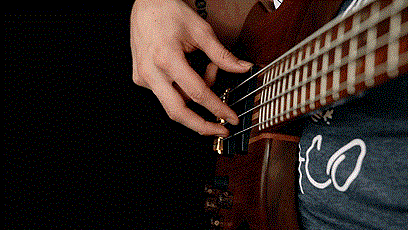
3. Pluck the strings with subdivision rhythm. Start with a slow tempo means you could be able to hear the sub-divided beats and mimic the feel more correctly. The feel of whole note, half note, quarter notes, eight notes, triplets, sixteenth notes should be competent and clearly understand from this stage of musical foundation. Getting a right feel of these materials not only help you in counting the bars, tracking song’s progression but also create an inner metronome for your musical feeling. The ability to recognize time signature and instantly hit on the snare drum of the beat is a gift to a bass player, you would never miss a single beat if you achieved the inner metronome with a sense of good rhythm.
Left Hand
Knowing proper left-hand position for bass guitar will make fretting chords and fingering strings simpler because the left hand will be more comfortable. By keeping it loose and relaxed, you’ll be able to fret the strings with the least amount of effort. The proper position also enables you to play at great speed and with great accuracy.
You want your left hand to cover one fret per finger without causing any undue stress in your hand. This spacing will set up your hand to execute almost any musical figure without shifting. When you do have to shift, a move of one fret in either direction usually suffices.
1. Stretch your left arm out in front of you before practice. Keep your wrist and hand straight. Don’t put your effort to practice an instrument without a comprehensive mind, energy for a practice session is limit and you just don’t want to waste them to gain none of a productive result. Keeping your wrist straight to the hand’s gesture is necessary to avoid inaccurate fretting technique for the left hand. Bending the wrist only makes it more difficult to you when you’re trying to land the fingers on fretboard and quickly drain out your left hand stamina even though you are not intentionally using muscle. First of all, your left hand should be relax and there’s no muscle stiffness are needed.
2. Without changing the angle on your wrist, turn your hand over so that your palm faces up and your fingers are slightly curved. Position your thumb so that it faces your index finger, or the area between your index and middle fingers. A good position of the instrument on your hands could get you more time to enjoy the process of practicing, durable and consistency is the key to be solid. A better posture to reach the neck is holding the bass closer to your chest as you could hug your bass in arms, this is an optimize option of playing posture could be seen very common in electric Jazz bass players. (Marcus Miller, Hadrien Feraud, Victor Wooten, etc).
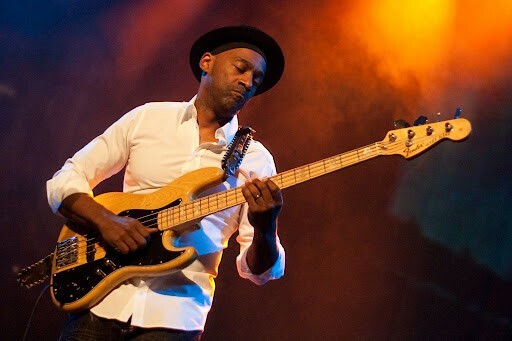
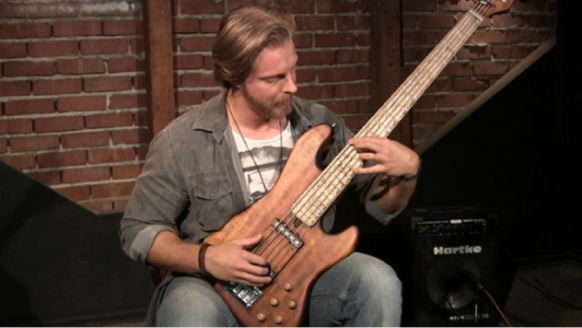
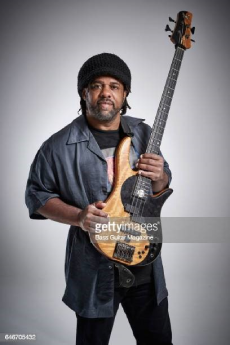
3. Bring your elbow in to the side of your rib cage (without moving your hand) until the bass guitar’s neck is in the palm of your hand.
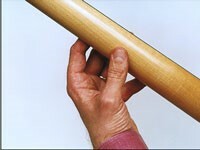
4. Place the tip of your thumb on the middle of the back of the neck. Make sure that your fingertips are pointing upward. The most important thing to remember when stretching your fingers on fretboard is to put on one finger – per fret. As the following example.
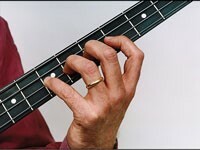
5. Gently spread your fingers onto the strings, with each finger close to an adjacent fret. Curl your fingers until your fingertips are on one of the strings. Be sure to keep the tips of your fingers close to the frets as you play.
Conclusion
“THE RIGHT TECHNIQUE IS THE ONE THAT GETS YOU THE MUSICAL RESULTS YOU NEED”. A “GOOD/RIGHT” TECHNIQUE IS THE ONE THAT GETS YOU THE MUSICAL RESULTS YOU NEED WITHOUT CAUSING PAIN OR UNNECESSARY TENSION. EVERYONE HAS UNIQUE MUSICAL VOICES AND GOALS, A DIFFERENT BODY, DIFFERENT STYLES OF MUSIC THEY WANT TO PLAY, AND DIFFERENT WAYS THEY WANT TO APPROACH THE BASS.
TECHNIQUE IS A TOOL, EVENTUALLY, WE ALL WANT TO ENJOY THE MUSIC AND PLAYING MUSIC! HAVE FUN WITH IT!







